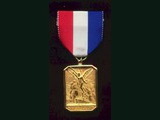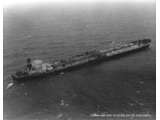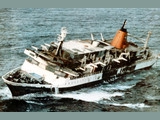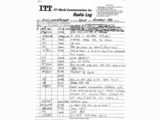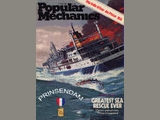SOS de PTJA

![]() Jim Pfister, NS1L ex K1TAD, WB6MMJ, W6MQO, N6CF and VQ9ZZ and 34 other callsigns from various ships. Quoting from Jim's QRZ entry
Jim Pfister, NS1L ex K1TAD, WB6MMJ, W6MQO, N6CF and VQ9ZZ and 34 other callsigns from various ships. Quoting from Jim's QRZ entry ![]() ext. Link
ext. Link
I was first licensed at the age of 15, in April of 1961 as KN1TAD from Randolph, Massachusetts. - In 1965 I joined the U.S. Coast Guard and I left in 1969 as an E-6 Radio Operator. I served on many different Coast Guard vessels. After serving my 4 years, I left the US Coast Guard. I then took a course at a local Tech School in Glendale, California, where I studied electronics. After Graduation, I passed all my commercial FCC licenses, including Radio Telegraph 1st Class. Plus all the Amateur Radio licenses. I went to work for the Southern Pacific RailRoads in Los Angeles, California in February of 1970. I relocated to the San Francisco Bay area in 1975. I went to work at a Ship to Shore radio station ITT San Francisco Radio "KFS". We sent and received CW (Morse Code) messages to and from ships from all over the world. I started as a High Speed Teletypist.- After that, I took a leap of faith and decided to return to sea in 1979. I joined the U.S. Merchant Marines. I got all my Federal Licenses to sail as Radio Electronics Officer on ships of the U.S. Merchant Fleet.
On October 4th 1980, the Passenger Ship MV Prinsendam/PJTA caught fire in the Gulf of Alaska in Position 57.38 North 140.25 West. The Prinsendam had just departed Alaskan waters enroute to Indonesia for their winter season, with 320 Passengers and 240 Crew members onboard, when the fire onboard erupted. The T/T Williamsburgh/WGOA was within 120 Nautical Miles from the burning ship. We had just departed from the Oil port of Valdez, Alaska. Davey Ring, N1EA, was my Radio Officer Apprentice while I was onboard as Chief Radio Electronics Officer. Our VLCC (Very Large Crude Carrier) with a length of 1,098 feet was the main rescue vessel that the US Coast Guard and Air Force and Canadian Coast Guard used for a Landing Platform for their Helicopters with rescued passengers and shipboard personnel.
The weather was a major factor, due to a fairly early October storm. The MV Prinsendam's Captain's gig is astern of the Williamsburgh, with a Helo onboard amidship's. The T/T Williamsburgh accomplished quite a few of her own rescues, as we advanced to many inflatable Lift Rafts and Life Boats, during the storm. All Passengers and Crew were rescued without loss of life. There were a few injuries and some of the rescued passengers had hypothermia due exposure to the cold Alaskan winds and storm conditions. It has been called the Greatest Single Ship Rescue in History. Nice!
Quoting from David's QRZ entry ![]() ext. Link
ext. Link
According to Mr. Jack van der Zee the Chief Radio Officer of the MV Prinsendam , the satellite communications failed during the rescue, but Morse Continued to operate. SOS signals from this rescue were received as far away as New Zealand (ZLB). During the next approximately 20 years, the value of Morse Code was trivialized and minimized. The Commanding Officer of one Coast Guard Communications Station (Boston NMF) said that the maximum range of Morse Code sent on the distress frequency of 500 kHz was 100 miles, maximum. Later comments by the Coast Guard hinted that Morse Code was like a "secret handshake", if you know it you are in. Regrettably, those that know how well Morse works, are those who can copy it. Others must accept what we can demonstrate by using it.
The MV Prinsendam was built at Shipyard de Merwede in the Netherlands in 1973. That ship was 427-foot-long and typically carried about 350 passengers and 200 crew members. The liner was transiting through Gulf of Alaska waters, approximately 120 miles south of Yakutat, Alaska, at midnight on October 4, 1980, when fire broke out in the engine room. The vessel's master declared the fire out of control one hour later and the Prinsendam sent a radio call requesting immediate assistance. The United States Coast Guard at Communications Station Kodiak, Alaska (NOJ) requested that the MV Prinsendam send out an SOS, the Captain declined, but Chief Radio Officer, Jack van der Zee sent out one anyway about a half hour later which resulted in the alerting of nearby vessels, such as the 1100 foot supertanker, T/T Williamsburgh which was operated by Avon Marine of Lake Success, NY. Jack v.d. Zee kept this secret until just before his death because what he did could have resulted in loss of his Radio Officer's license - but by doing what he did, he was responsible for saving the lives of all aboard. The Queen of the Netherlands was just about to give Jack lifetime knighthood for his actions when he died. Jack van der Zee is a true hero of the Netherlands.
